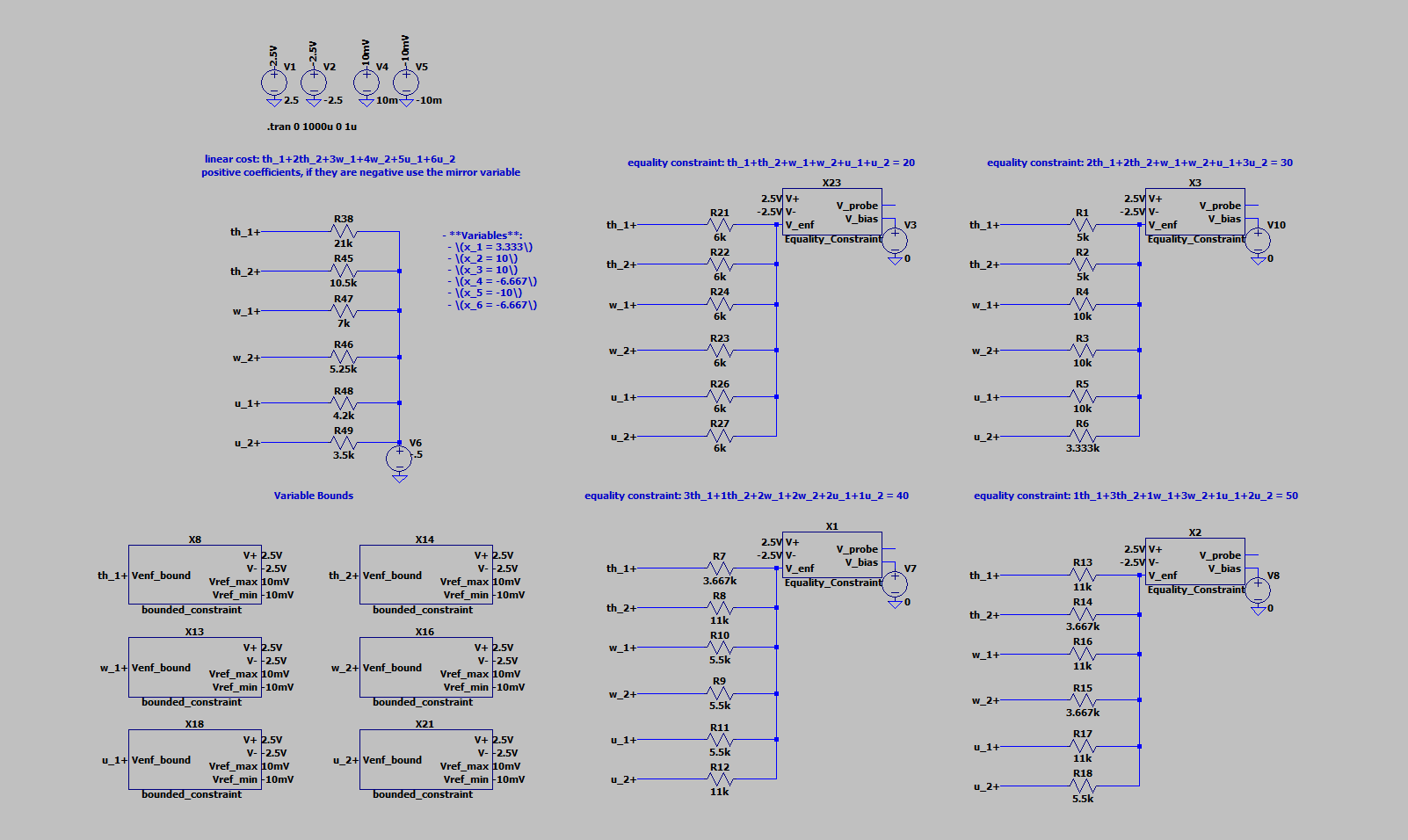Overall progress:
The simulation of the analog LP solver circuit is capable of solving several problems we’ve supplied to it, including dense and sparse problems with and without negative coefficients and non-zero bias terms. However, its accuracy is sometimes less than desirable. The software SLP solver is capable of solving the NLP formulation of the NMPC controller, but is pending more rigorous testing and robustness improvements.
Significant risks and risk management:
Risk: The analog LP solver circuit displays suboptimal accuracy depending on its configuration
Description: In our newest iteration of the circuit simulation, the analog LP circuit is capable of solving LPs, but the accuracy of the solution is sometimes problematic. Although we haven’t yet encountered a problem whose solution is more than 10% off, the cumulative effect of the SLP algorithm could yield a solution that is less accurate than each of its LP subproblems. In particular, we found that the error is dependent on V_cost, a voltage we could configure, with excessively high or low values causing high error in the solution.
Severity: If the conditional inaccuracies in the solutions can’t be reduced, the progress of the whole project would be severely jeopardized, because it will likely cause the accuracy of the solution to be worse than our 10% requirement, and might also cause swing-up to fail.
Resolution: We are currently investigating the root cause of the inaccuracies, and testing several potential solutions. In particular, we are looking into the possibility of raising OpAmp rail voltages without exceeding the voltage limits of the digital potentiometers. This might be difficult since the circuit needs to support a wide range of configurations.
Changes to the existing design:
There are currently no significant changes to the existing design. However, depending on the root cause of the inaccuracies, we might change the design to fix it.
Changes to the project schedule:
Similarly, there are currently no significant changes to the project schedule. We aim to order the PCB as early as possible.






